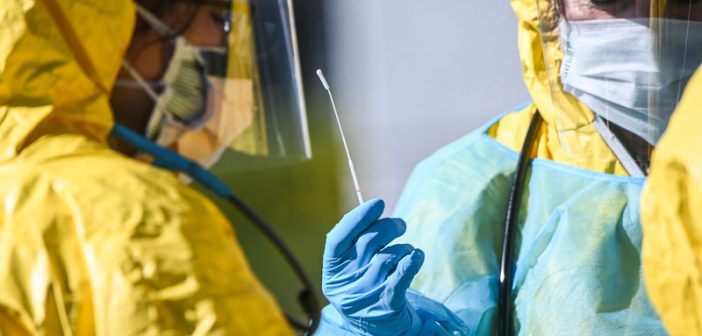Health Desk: When it comes to testing for COVID-19, there are two competing narratives. The Trump administration claims the U.S. has been doing well and has enough testing capacity, for states to begin to enter the first phase of the White House plan for reopening.
But many public health officials, hospital administrators and state leaders disagree.
Earlier this week, Maryland Gov. Larry Hogan said during a CNN interview that a lack of testing is a problem and “has been since the beginning of the crisis.”
Widespread testing is key to helping communities quickly identify infected people, and trace and isolate their contacts. This strategy can help prevent more waves of illness.
There’s no exact number to aim for, but here’s a guiding principle: You want a low percentage of your tests to come back positive, around 10% or even lower, says William Hanage, an epidemiologist at Harvard.
That 10% benchmark is based on recommendations from the World Health Organization. Why should positives be low? If a high percentage of tests come back positive, it’s clear there’s not enough testing to capture all of the infected people in the community. “The lower the percentage of tests you’re doing that come back positive, the better,” Hanage says. Some countries that have done extensive testing have positive rates near this 10% benchmark, or lower. South Korea is “testing so many people that only 3% of them are positive,” said Rochelle Walensky, an infectious disease specialist at Massachusetts General Hospital, during a livestream hosted by the medical journal JAMA.
But, so far the U.S. appears to fall short of this benchmark. Nationally, according to CDC data, about 18% of tests have been positive to date, and 21% were positive in the week ending April 11.
The U.S. has one of the highest percentages of confirmed cases versus tests conducted globally, according to Our World In Data, an online platform published by Oxford University.
In fact, the percent of positives increased the week that ended April 11, in tests from all types of labs — clinical labs, public health labs and commercial labs. Among commercial labs, which account for the bulk of the tests, it rose by from about 21% to about 23%.
Among states, the picture is mixed. Some are higher than average, such as Massachusetts, which has ranged from a 24% to 31% positive rate in recent days, according to a spokesperson for the health department.
“That means we have an extraordinary high pre-test probability of having disease,” Walensky said of Massachusetts. “And that’s really just because we don’t have capacity to test more.”
The picture is similar in New York. Over the seven days, data from New York state shows about 1 in 3 tests have been positive.
In Georgia, the state has reported more than 88,000 tests with a 23% positive rate. Gov. Brian Kemp announced at a news conference Monday that he’s taking steps to reopen Georgia’s economy, starting Friday. He cited “favorable data, enhanced testing and approval of our health care professionals.”
Other states are reporting lower positive rates. In Ohio, out of around 91,000 total COVID-19 tests, the state has confirmed nearly 14% to be positive. In South Carolina, a state where the governor issued executive orders on Monday allowing beaches and some retail stores to reopen, the state has documented that about 11% of tests are positive out of more than 41,000 tests. And the proportion of those testing positive for COVID-19 in Florida is 10% of more than 277,000 tests.
Of course, even if a state currently shows a low percentage of positives, infections could still surge in places where testing has been inadequate. And this benchmark is not the only factor that states need to consider. The criteria to move to Phase 1 of reopening include a sustained, 14-day decline in new cases of COVID-19 and a decline in hospitalizations. And many public health leaders say states need to have enough resources to ramp up contact tracing before opening up, which many don’t yet have.




